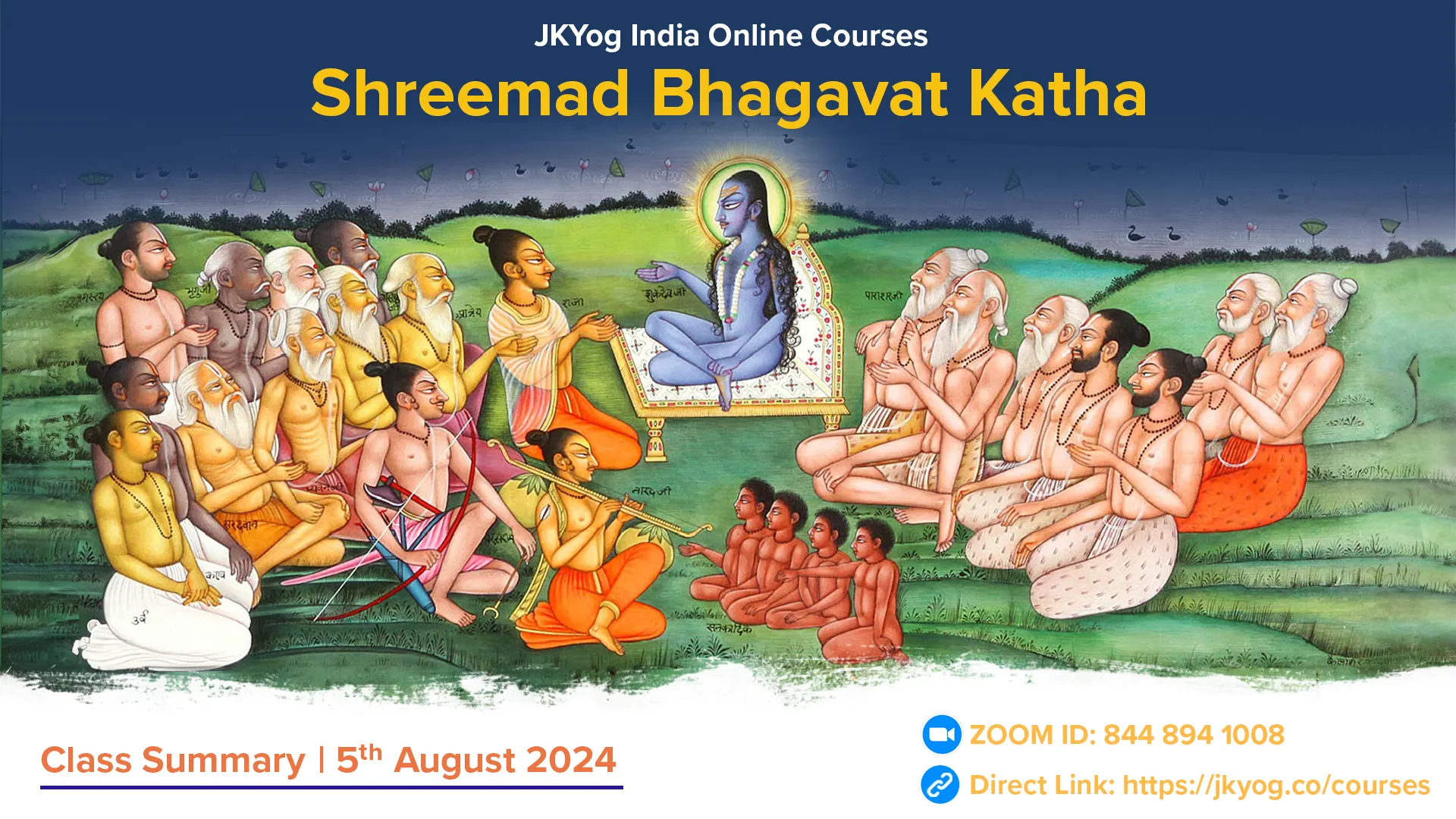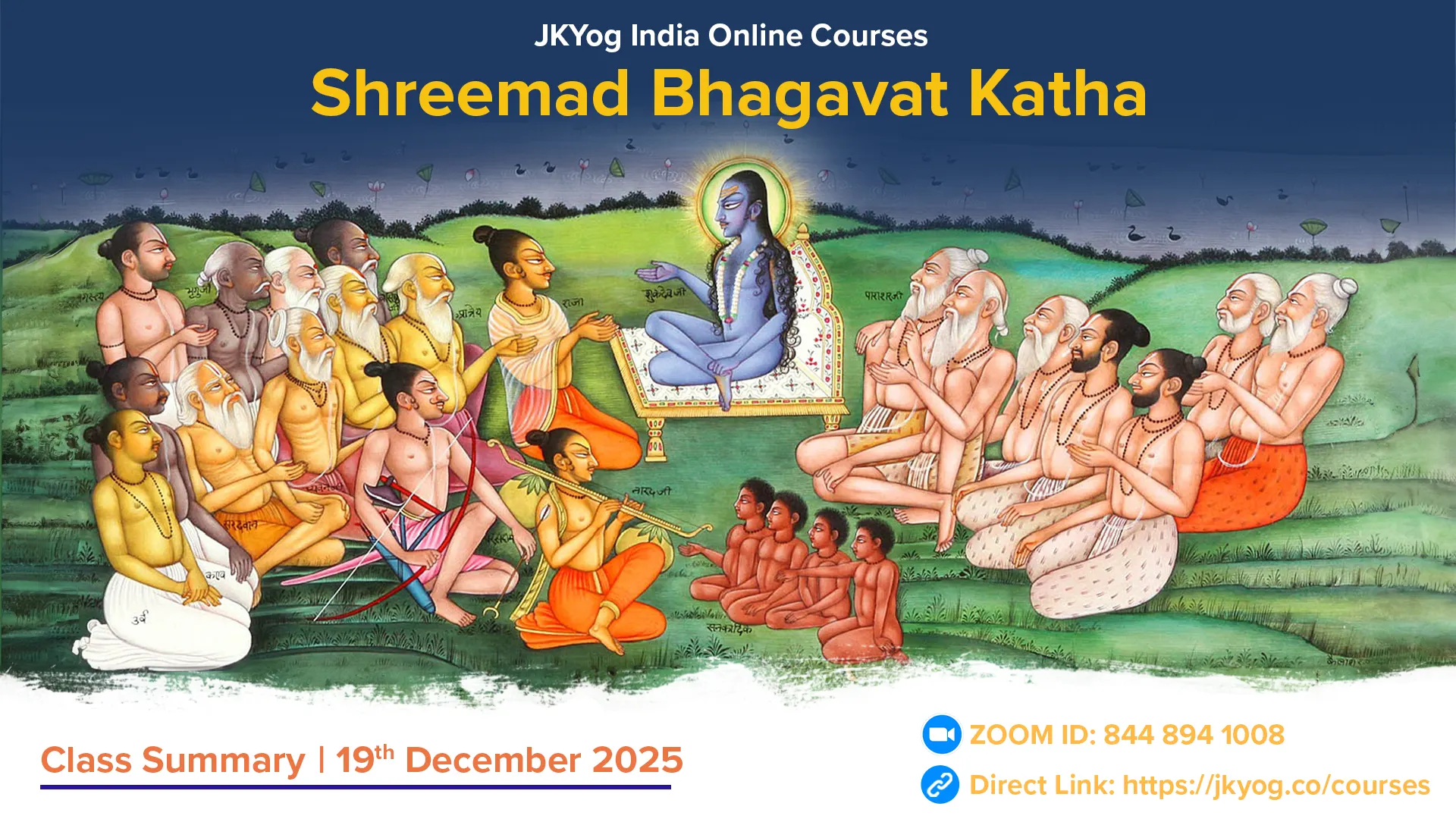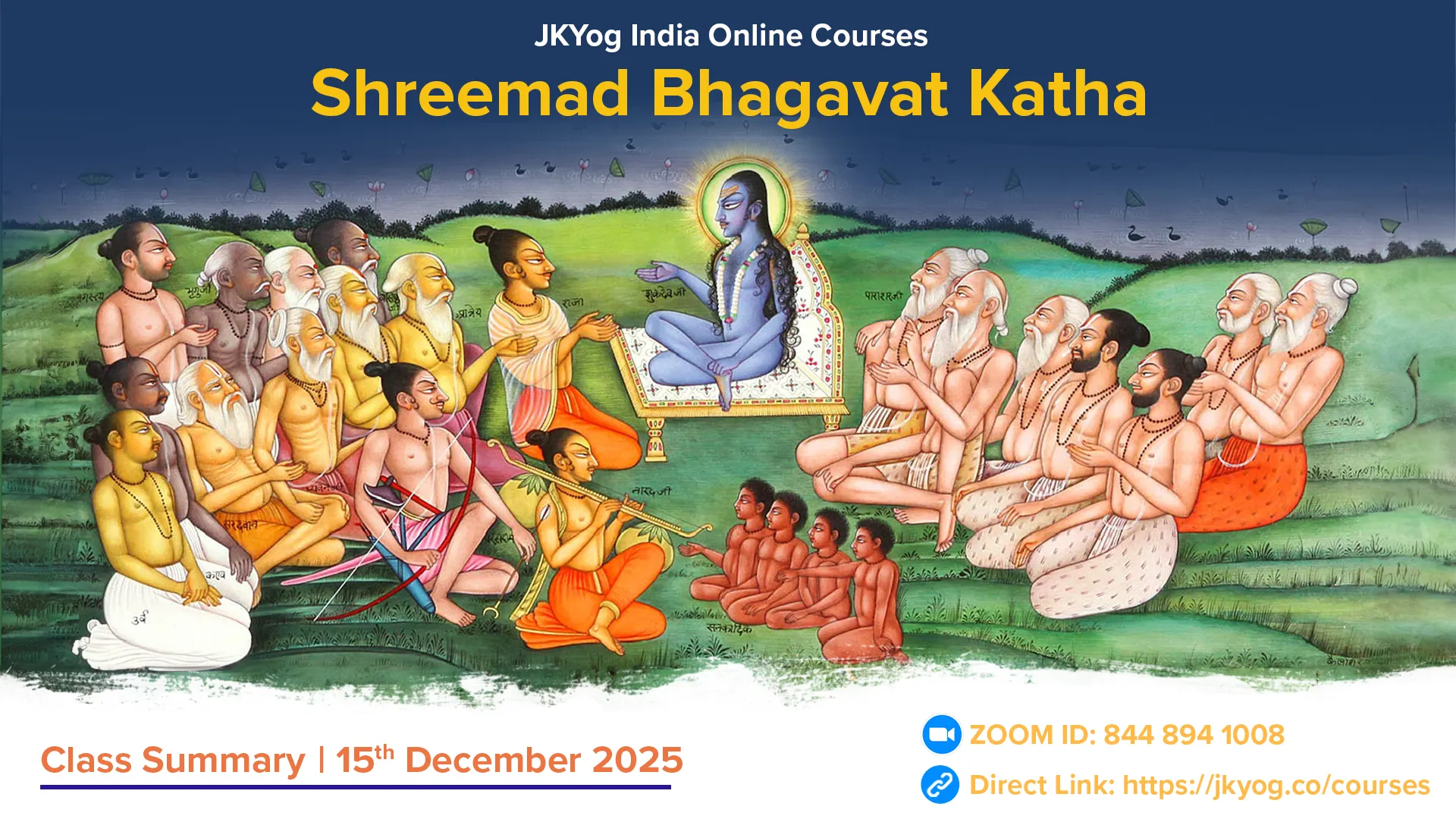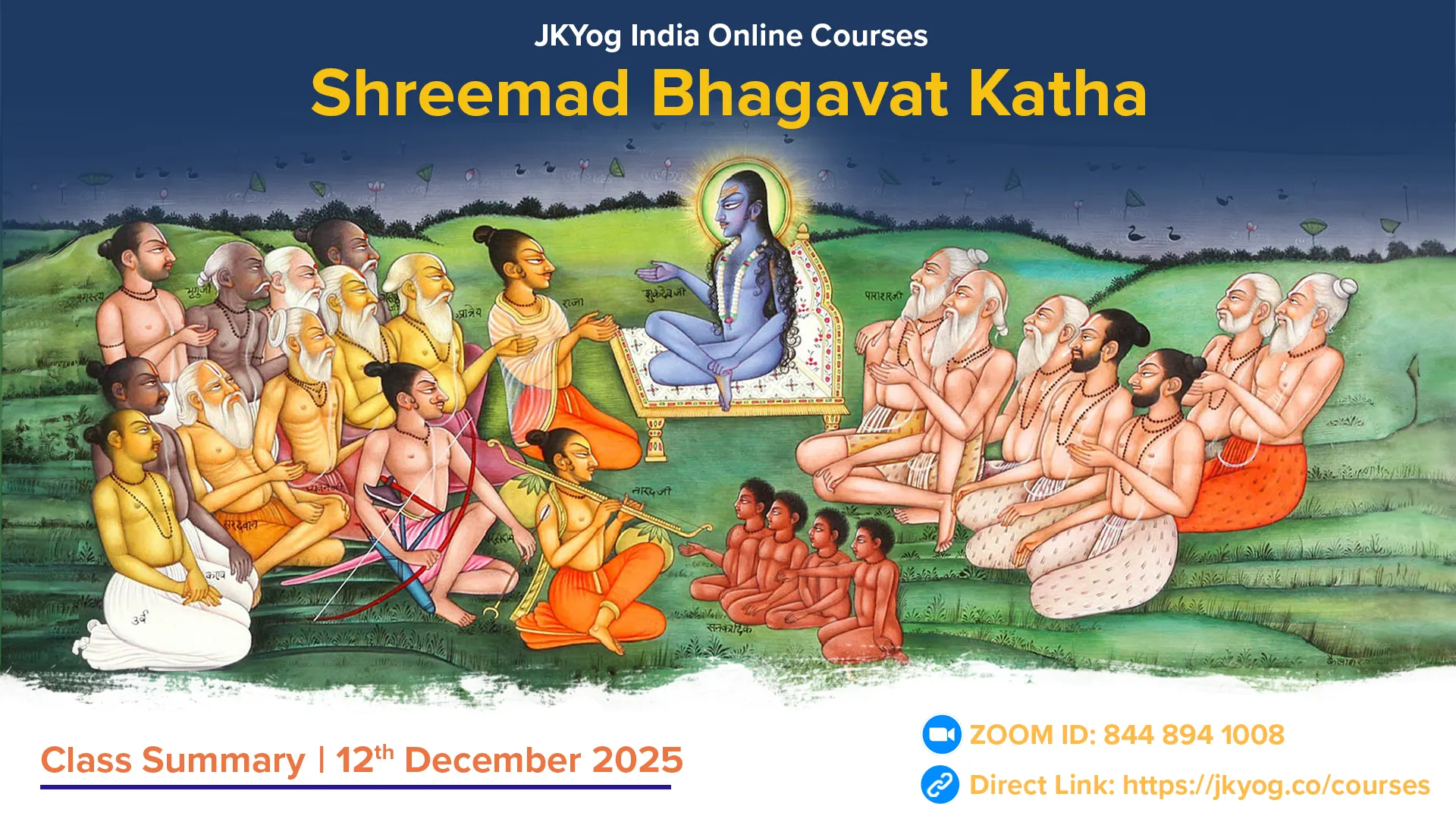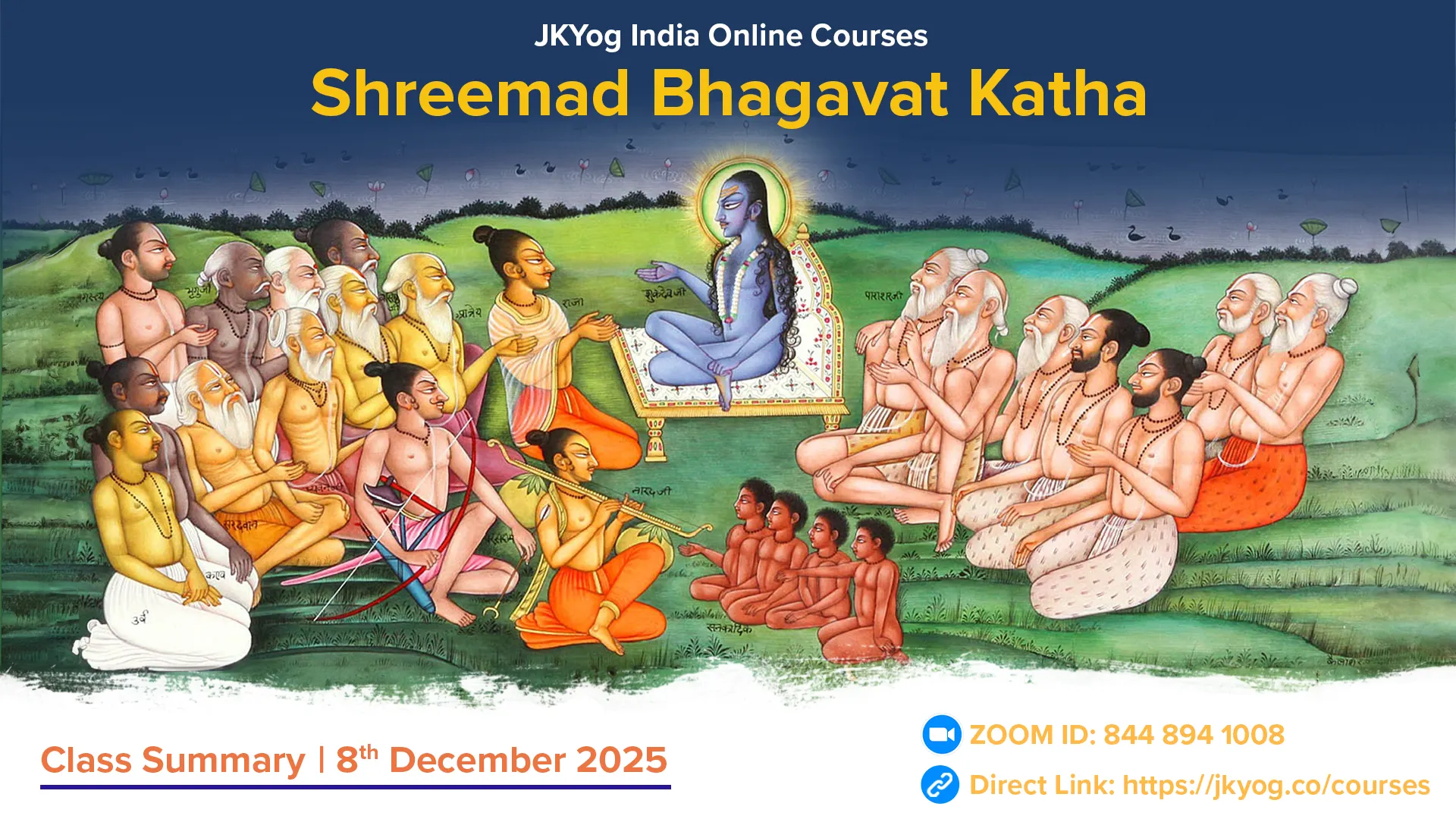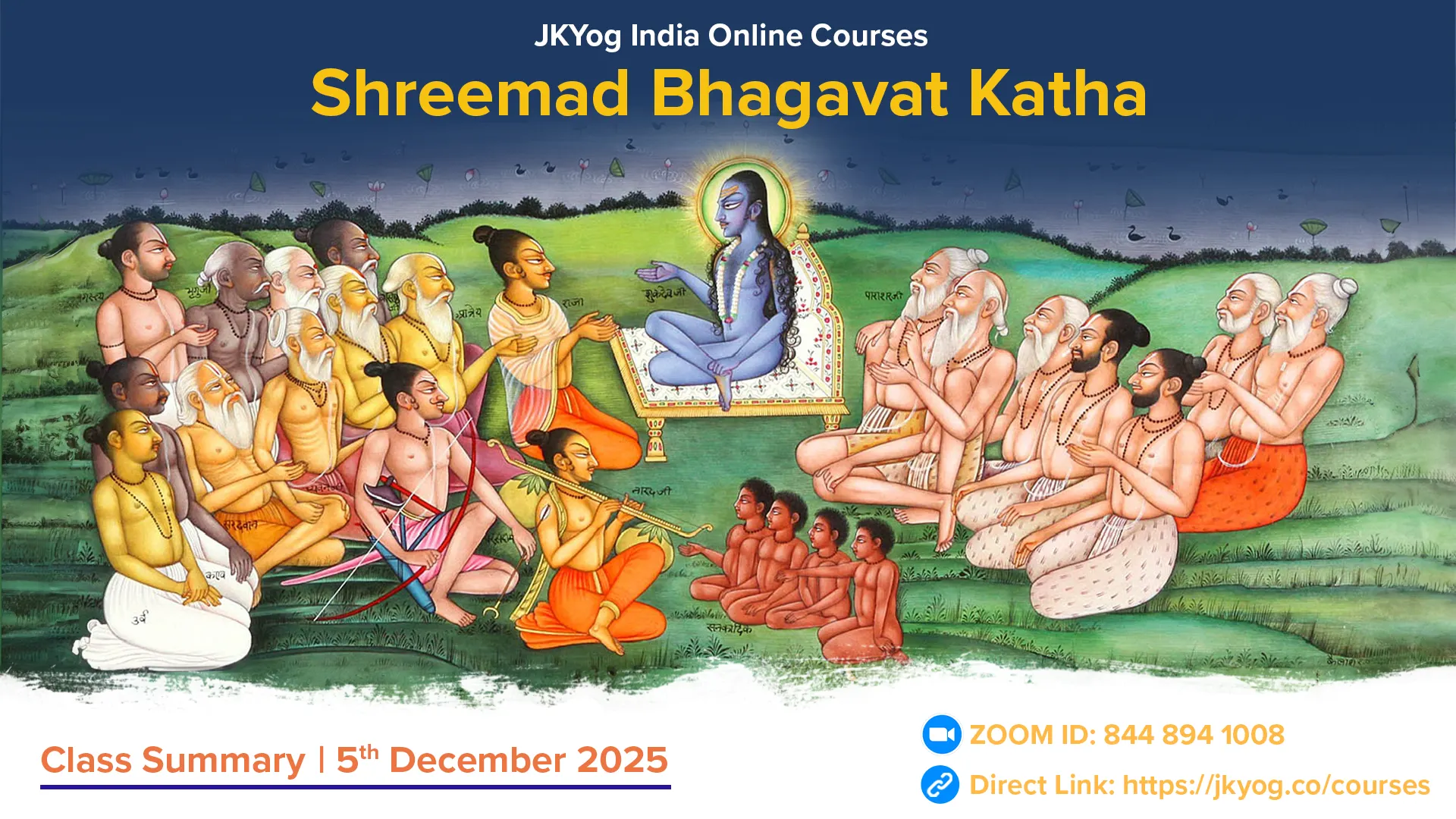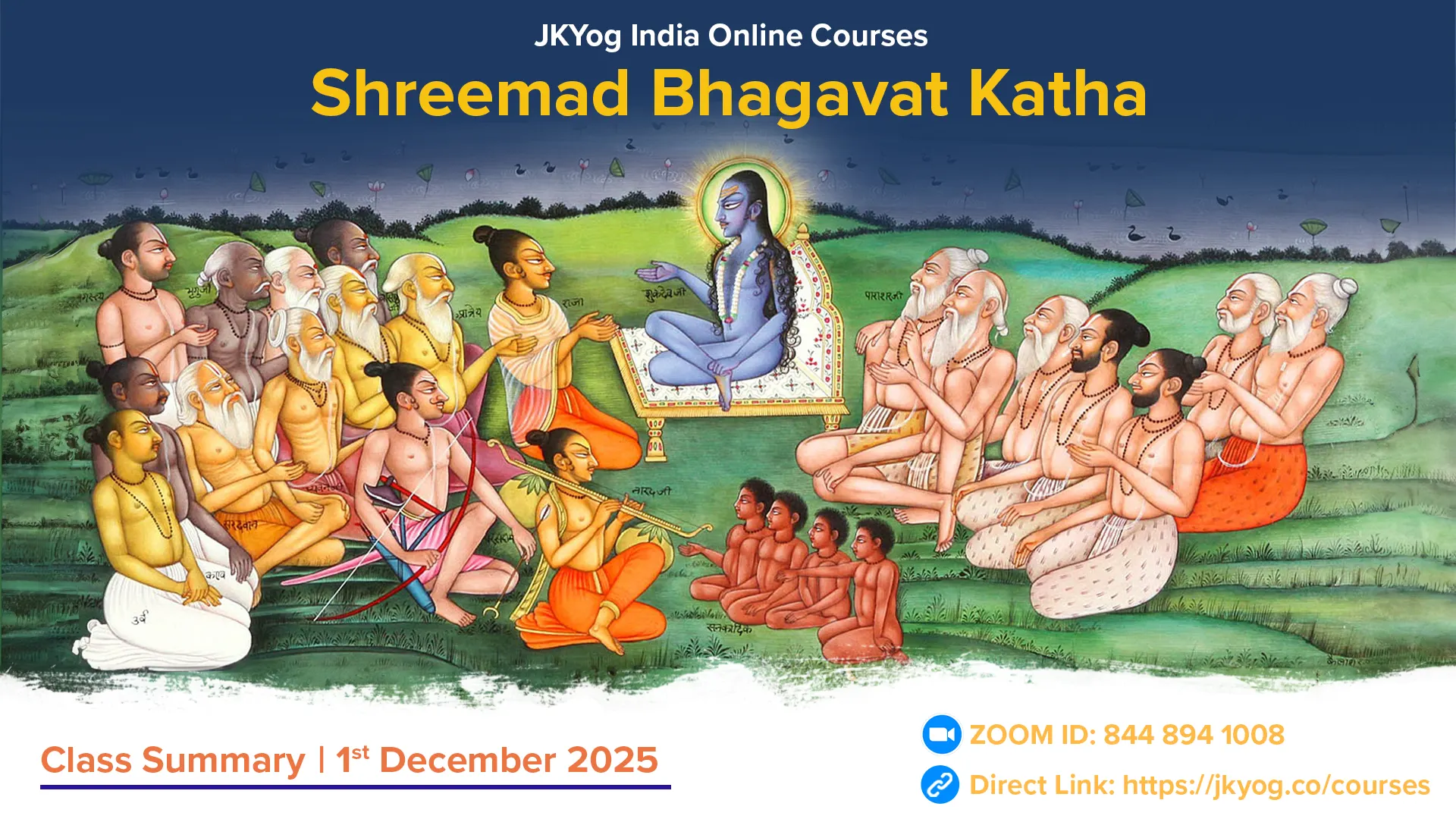Shreemad Bhagavat Mahapuran- Canto: 2, Chapters: 2
Shukadevji explains to Parikshit that when a yogi wishes to leave the human realm, he should follow the following instructions:
- Detachment from Time and Place: The yogi should not be attached to any particular place or time.
- Sitting in a Steady Asana: The yogi should sit comfortably in a stable posture.
- Control of Breath and Senses: The yogi achieves self-control by controlling the breath and restraining the senses through the mind.
- Focus on the Pure Intellect: The yogi should control the mind with his pure intellect and merge the intellect into the kṣhetrajña (knower of the field)
- Absorption into the Supreme Soul: The yogi should merge the kṣhetrajña into the inner self and the inner self into the Supreme Soul.
- Attaining Supreme Peace: By merging into the Supreme Soul, the steady-minded yogi reaches a state of supreme peace, where no duties remain for him.
In this state, the Sattva guna (goodness) does not exist, and the Rajas (passion) and Tamas guna (ignorance) are also absent. There is no existence of the ego, Mahat Tattva (Great Principle), or Prakriti (Maya or the Material Energy). In this state, even the time and deities do not have an impact; therefore, the gods and their dependent beings cannot exist. Reaching this state, the yogi renounces all things different from the Supreme Soul, repeatedly affirming 'not this, not this,' and remains in the divine embrace of the most revered form of Bhagwan with unparalleled love, which is the supreme state of Bhagwan.
How Does Sadyomukti (Direct Liberation) Occur?
Shukadevji further explains Sadyomukti (direct liberation) to Parikshit. Sadyomukti refers to attaining liberation from bondage while still in the living state. For a Brahmanishta yogi whose mind’s desires have been eradicated through the power of knowledge, the process of leaving the body should be as follows:
- Stabilise: First, press the anus with the heels and stabilise the body.
- Direct the Prana: Direct the prana (life force) upwards through the six chakras without panic.
- Move the Air: The yogi should bring the air from the navel chakra (Manipura) to the heart chakra (Anahata).
- Raise the Air: Move the air with the Udana vayu (ascending air) to the Vishuddha chakra (throat centre) above the chest.
- Ascend Slowly: Gradually elevate this air to the root of the palate (the anterior part of Vishuddha chakra).
- Block the Seven Apertures: Close the seven openings: two eyes, two ears, two nostrils, and the mouth.
- Guide the Air: Direct the air to the Ajna chakra (between the eyebrows).
- Hold the Air: If there is no desire to go to another realm, hold the air there for approximately six minutes.
- Reach the Sahasrara: With a steady aim, move the air to the Sahasrara (crown chakra) and merge in the Supreme Soul.
- Break the Brahmarandhra: Break through the Brahmarandhra (the crown of the head) and leave the body and senses behind.
How Does Kramamukti (Gradual Liberation) Occur?
The concept described here is known as "Kramamukti", or gradual liberation. It refers to the liberation attained by a practitioner who gradually ascends to Brahmaloka (the realm of Brahma) due to subtle desires and eventually becomes liberated with Brahmaji.
Here's a detailed explanation:
- Kramamukti: When a practitioner, due to subtle desires, ascends to Brahmaloka and gradually attains liberation with Brahmaji, this process is termed Kramamukti.
- Desire to Ascend: If a yogi wishes to go to Brahmaloka, achieve the eight siddhis (spiritual powers), associate with divine beings, or travel through any realm of the three worlds (Tri-Loka), they must leave their body along with their subtle body and senses.
- Subtle Body: In this state, the yogi's body becomes as subtle as air. Those practising worship, austerity, yog, and knowledge can travel freely within and beyond the three worlds. Such uninterrupted movement is not possible merely through actions.
- The journey to Brahmaloka in Kramamukti is unique. As a yogi departs through the luminous path of Sushumna, they first pass through the Agniloka, the realm of fire, where any remaining impurities are burned away.
- Reaching Shishumara: The yogi then arrives at the Shishumara, a radiant Chakra associated with Bhagwan Hari (Vishnu), the centre of the universe's rotation.
- Entering Maharloka: After crossing the Shishumara, the yogi enters Maharloka with a subtle and pure body. This realm is revered by Brahmajnanis (those knowledgeable in Brahman) and gods, where beings live and wander for an entire Kalpa (a vast period of time).
When the time of Pralaya (cosmic dissolution) comes, the yogi witnesses the lower realms being consumed by the fire that emerges from the mouth of Shesh (the cosmic serpent) and then ascends to Brahmaloka (Satyoloka). In Brahmaloka, great Siddhas reside on the divine plane. The lifespan of Brahmaloka is equivalent to the lifespan of Brahma, encompassing two Parardhas (aeons).
In Brahmaloka, there is no sorrow, grief, old age, or death. There is no worry or fear. However, if there is any sorrow, it arises from witnessing the severe difficulties of birth and death experienced by those who do not know this ultimate state. The inhabitants of Brahmaloka, having achieved profound spiritual growth and understanding, feel deep compassion and pain in their hearts for such beings.
Upon reaching Satyoloka, the yogi fearlessly merges their subtle body with the Earth and then, without haste, penetrates the seven coverings:
- The subtle body merges with the Earth.
- The Earth merges into water.
- The water merges into fire.
- The fire merges into the air.
- The air merges into space.
As the yogi passes through these five gross coverings, their senses also merge into their respective subtle elements:
- Smell: The sense of smell merges into its subtle essence.
- Taste: The sense of taste merges into its subtle essence.
- Sight: The sense of sight merges into its subtle essence.
- Touch: The sense of touch merges into its subtle essence.
- Hearing: The sense of hearing merges into its subtle essence.
The yogi enters the sixth covering by crossing the gross and subtle coverings of the five elements (Ahamkara). Here, the subtle elements merge into the Tamasic (ignorant) ego, the senses into the Rajasic (passionate) ego, and the deities governing the mind and senses into the Sattvic (pure) ego.
The yogi then enters the Mahat Tattva (Great Principle) along with Ahamkara and ultimately merges into Prakriti (Maya or the material energy). At the time of the Great Pralaya, when the Prakriti covering also dissolves, the yogi, now in the form of bliss, attains the serene Supreme Soul.
Once this divine process of reaching the Supreme Soul is achieved, the yogi does not have to return to this world.
Shukadevji Maharaj says, “Parikshit! In response to your question, I have described the two eternal paths mentioned in the Vedas: Sadyomukti (direct liberation) and Kramamukti (gradual liberation). When Brahmaji worshipped Bhagwan Vasudev and asked Him about the path to liberation, Bhagwan responded by explaining these two paths to Brahmaji.
For a person trapped in the cycle of the world, there is no other beneficial path except attaining the supreme, loving devotion to Bhagwan Shree Krishna. Brahmaji, having studied the Vedas three times with a single-minded focus, determined that the supreme Dharma is the one that leads to the supreme love for Bhagwan Shree Krishna.”
Bhagwan sarvabhuteshu lakshitah svatmana Harih
Drishyaih buddhyadibhih drashta lakshanair anumapakaih
Meaning: Among all moving and non-moving beings, Bhagwan Shree Krishna is perceived through His own self. The intellect and other sensory objects serve as signs that help us infer His presence, but He alone is the witness and perceiver of all these. (Bhagavat 2.2.35)
Tasmaat sarvatmanaa raajan harih sarvatra sarvadaa
Shrotavyah keertitavyashcha smartavyah bhagavaan nrinam
Meaning: Therefore, O King, humans should, at all times and in all situations, with all their strength, listen to, chant, and remember Bhagwan Shree Hari. (Bhagavat 2.2.36)
Pibanti ye bhagavat-atmanah satam kathamritam shravanaputeshu sambhritam
Punanti te vishaya-vidushitashayam vrajanti tac-charana-saroruha-antikam
Meaning: O King, the saintly persons continually distribute the sweet nectar of the divine discourse of Bhagwan. Those who drink this nectar, filling their ears, find that the poison of worldly desires is purified from their hearts, and they ultimately attain the lotus feet of Bhagwan Shree Krishna. (Bhagavat 2.2.37)
Summary: JKYog India Online Class- Shreemad Bhagavat Katha [Hindi]- 05.08.2024

